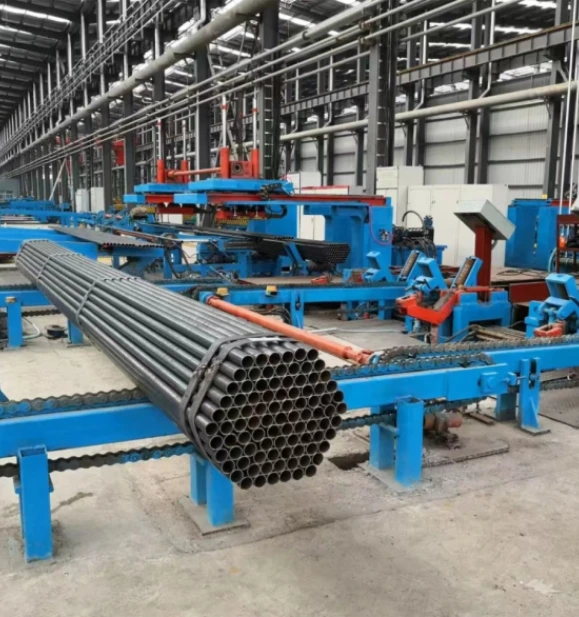metal roll forming equipment
Metal Roll Forming Equipment An Overview
Metal roll forming equipment plays a pivotal role in the manufacturing industry, enabling the production of various metal profiles with high precision and efficiency. This technique is widely utilized across numerous sectors, including construction, automotive, and aerospace, due to its versatility and reliability. In this article, we will explore the key components, processes, and benefits of metal roll forming equipment, as well as its applications in various industries.
Understanding Roll Forming
Roll forming is a continuous bending process in which a long strip of metal (usually in coil form) is fed through a series of rollers, each progressively shaping the metal into a specific profile. This method is particularly effective for producing items with consistent cross-sections, making it ideal for long lengths of the same product. The process begins with the feedstock, typically made from materials such as mild steel, stainless steel, or aluminum, which is unwound from a coil and guided into the roll forming machine.
Key Components of Roll Forming Equipment
1. Decoiler The decoiler unwinds the metal coil and feeds it into the forming line. It must have the ability to handle different coil sizes and weights, ensuring a steady and reliable supply of material to the rollers.
2. Roll Forming Station This is the heart of the operation, consisting of multiple sets of rollers aligned in a specific sequence to gradually shape the metal strip. Each set of rollers progressively bends the metal, ensuring it follows the desired profile.
3. Cut-off Mechanism At the end of the roll forming process, a cut-off mechanism is employed to shear the finished product to a predetermined length. This could be either a mechanical shear or a flying shear, which operates while the material is in motion.
4. Stacker After the metal profile is cut, it needs to be stacked for further processing or shipping. The stacker automates this part of the process, improving efficiency and reducing labor costs.
5. Control System Modern roll forming equipment is equipped with advanced control systems that allow operators to monitor various parameters, ensuring optimal production speed, thickness, and accuracy of the profiles being produced.
The Roll Forming Process
The roll forming process involves several key steps
1. Setup The machine is set up with the appropriate rolls for the desired profile. This requires precise alignment and calibration.
metal roll forming equipment

2. Feeding The metal coil is unwound, and the leading edge is fed into the roll forming station.
3. Forming As the metal passes through the rollers, it is bent into the desired shape. The continuous nature of the process allows for high-speed production.
4. Cutting The finished sections are cut to length. This can be done on-the-fly or after the entire coil is formed, depending on the machine configuration.
5. Finishing Finally, additional processes, such as punching or welding, may be performed to add features or assemble components.
Benefits of Metal Roll Forming
1. Efficiency Roll forming is highly efficient, capable of producing long lengths of material with minimal waste. The continuous process reduces the time needed for setup and production.
2. Consistency The precision of roll forming ensures that each product is uniform in size and shape, which is crucial for applications that require accuracy.
3. Versatility Roll forming can be used to create a wide variety of profiles, including channels, angles, and tubes, making it suitable for diverse applications.
4. Cost-effective Although the initial setup cost may be high, the long-term savings in labor and material costs make roll forming an attractive option for manufacturers.
Applications of Metal Roll Forming Equipment
The applications of metal roll forming equipment are extensive. In the construction industry, it is used to create roofing panels, wall studs, and door frames. The automotive industry often utilizes roll-formed components for structural and aesthetic parts, while the aerospace sector benefits from lightweight and high-strength profiles produced through this method. Additionally, roll forming is essential in producing HVAC ductwork, shelves, and racks in various commercial settings.
In conclusion, metal roll forming equipment has revolutionized the way we produce metal components, providing manufacturers with an efficient, precise, and cost-effective way to meet the demands of various industries. As technology continues to advance, we can expect further innovations in roll forming equipment, enhancing its capabilities and expanding its applications. Whether in construction, automotive, or aerospace, the principles of roll forming remain central to modern metal fabrication.
-
High Frequency Straight Seam Welded Pipe Production Line-BzZhou Xinghua Machinery Equipment Manufacturing Co., LTD.|Precision Welding, High EfficiencyNewsJul.30,2025
-
High Frequency Straight Seam Welded Pipe Production Line|BzZhou Xinghua|Precision Welding&EfficiencyNewsJul.30,2025
-
High Frequency Straight Seam Welded Pipe Production Line - BzZhou Xinghua|Precision Engineering&EfficiencyNewsJul.30,2025
-
High-Frequency Straight Seam Welded Pipe Production Line-BzZhou Xinghua Machinery Equipment Manufacturing Co., LTD.NewsJul.30,2025
-
High-Frequency Straight Seam Welded Pipe Production Line-BzZhou Xinghua Machinery Equipment Manufacturing Co., LTD.|Precision Manufacturing, High EfficiencyNewsJul.30,2025
-
High Frequency Straight Seam Welded Pipe Production Line-BzZhou Xinghua Machinery Equipment Manufacturing Co., LTD.|Precision Steel Pipe Manufacturing&Industrial EfficiencyNewsJul.29,2025


